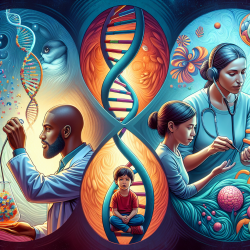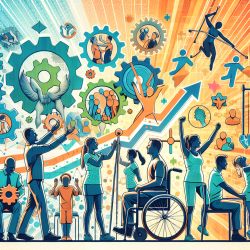Introduction
In the realm of speech-language pathology and child development, understanding the factors that influence early childhood outcomes is crucial. The recent study titled "Child marriage, maternal serum metal exposure, and risk of preterm birth in rural Bangladesh: evidence from mediation analysis" provides valuable insights into how socioeconomic and environmental factors can impact preterm birth, a condition with significant implications for child development.
Understanding the Research
The study conducted in rural Bangladesh, involving 780 mother-offspring pairs, highlights a critical link between child marriage, metal exposure, and preterm birth. Researchers identified that early pregnancy exposure to metals such as zinc, arsenic, and strontium, and mid-pregnancy exposure to barium, significantly increase the risk of preterm birth. Moreover, child marriage, defined as marriage before the age of 18, was associated with a higher risk of preterm birth, mediated by these metal exposures.
Key Findings
- Early exposure to zinc, arsenic, and strontium, and mid-pregnancy exposure to barium, are linked to preterm birth.
- Child marriage significantly increases the risk of preterm birth, with metal exposure mediating 30.2% of this effect.
- Women married after 18 years old had a considerably lower risk of preterm birth.
Implications for Practitioners
For practitioners working with children, especially in regions with high rates of child marriage and environmental pollution, these findings underscore the importance of considering socioeconomic and environmental factors in their assessments and interventions. Here are some practical steps practitioners can take:
- Advocate for policies that delay marriage age and reduce environmental pollution.
- Incorporate awareness of environmental and socioeconomic factors into therapy plans.
- Collaborate with local communities to educate about the risks of early marriage and metal exposure.
Encouraging Further Research
This study opens the door for further research into the causal mechanisms linking socioeconomic factors, environmental exposures, and child development outcomes. Practitioners are encouraged to engage in or support research efforts that explore these connections in different contexts and populations.
Conclusion
The study provides compelling evidence that child marriage and metal exposure are significant risk factors for preterm birth. By understanding and addressing these factors, practitioners can contribute to better outcomes for children. To delve deeper into the original research, please follow this link: Child marriage, maternal serum metal exposure, and risk of preterm birth in rural Bangladesh: evidence from mediation analysis.










